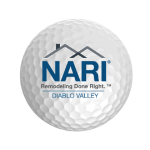Don’t passively linger while the insidious threat of mold-related health issues stealthily infiltrates your life; instead, seize the moment to proactively safeguard your well-being. Recognizing the paramount importance of addressing mold-related health risks within your home serves as the initial stride toward creating a living space that prioritizes your overall health. This comprehensive guide is meticulously curated to furnish you with essential knowledge and effective methodologies, empowering you to successfully combat mold-related challenges.
This guide thoroughly explores every facet, from detecting subtle symptoms of mold exposure to implementing stringent testing protocols for its presence. Its main goal is to provide you with the knowledge to identify potential problem areas, trace their origins meticulously, and employ effective removal techniques. Whether dealing with mold confined to a small corner or one that has permeated an entire property, our carefully crafted step-by-step instructions guarantee comprehensive coverage. These guidelines are intentionally designed to demystify and simplify what may initially appear as a daunting task, ensuring that you can approach mold-related challenges with confidence and clarity.
Join us for a life-changing experience as we explore mold awareness and remediation together, starting a thought-provoking journey into protecting your house. Get ready to explore the nuances of recognizing, comprehending, and successfully handling the health risks related to mold. This extensive book provides a wealth of information and doable solutions to help you safely and resiliently address mold-related health issues.
By actively engaging in this journey, you are investing in a healthy future in which your house becomes a haven of well-being rather than a potential hotbed of health hazards. Come along with me as we turn your house into a haven that ensures resilience and well-being while also maintaining its vitality and safety. Together, let’s navigate this path toward a living space that fosters health and vitality.
Table of Contents
ToggleUnderstanding Mold and Its Impact on Health
It is crucial to be aware of the potential health risks associated with mold exposure. In this discussion, we will explore how molds can affect your well-being, delve into the common symptoms resulting from exposure, and consider the lasting consequences.
Potential Health Risks Linked to Mold Exposure
Mold exposure carries a spectrum of health issues. Airborne mold spores can easily infiltrate our respiratory system, leading to allergic reactions. For some individuals, mild symptoms such as sneezing, coughing, and nasal congestion may manifest upon exposure to molds. However, those with existing allergies or asthma may experience more severe reactions.
Apart from allergic responses, extended exposure to molds can cause respiratory problems like wheezing and breathing difficulties, especially for individuals with pre-existing conditions like asthma or chronic obstructive pulmonary disease (COPD). Mold spores can irritate the airways, exacerbating underlying respiratory issues.
Recognizing Common Symptoms of Mold Exposure
Identifying signs indicative of mold-related health concerns is essential. Keep an eye out for these prevalent symptoms:
- Allergies: Persistent sneezing, a runny nose, or itchy eyes indoors or in specific locations may signal mold allergies.
- Respiratory Issues: Chronic coughing, wheezing, shortness of breath, or chest tightness may suggest mold affecting the respiratory system.
- Skin Irritation: Some individuals may develop skin rashes or hives following contact with molds.
- Headaches: Frequent unexplained headaches might be linked to mold exposure.
- Fatigue: Excessive tiredness, even after sufficient rest, could result from mold-related health problems.
- Sinus Problems: Persistent sinus congestion, infections, or sinusitis may be associated with mold exposure.
Consulting a healthcare professional for an accurate diagnosis and proper treatment is crucial if you experience these symptoms and suspect mold as the cause.
Long-Term Impact of Mold on Overall Well-being
While immediate symptoms may subside upon ceasing exposure, neglecting the issue can lead to long-term effects such as:
- Chronic Respiratory Conditions: Prolonged exposure to mold spores may contribute to the development or worsening of respiratory conditions like asthma or COPD.
- Compromised Immune System: Mold exposure has been linked to immune system suppression, increasing susceptibility to infections and illnesses.
- Neurological Symptoms: Some studies suggest a potential connection between mold exposure and neurological symptoms like memory issues, difficulty concentrating, and mood disorders, though further research is needed in this area.
Understanding the impact of molds on overall well-being is crucial. Proactive measures, including professional remediation for suspected mold problems, maintaining low indoor humidity (below 50%), promptly addressing water leaks or moisture issues, and ensuring proper ventilation, can help mitigate the risk of mold growth.
Understanding Mold in Your Home: Essential Information
Areas in Your Home Prone to Mold Growth
Molds can manifest in various sections of your living space, particularly in areas characterized by dampness or susceptibility to moisture. Common locations where molds tend to proliferate include:
- Bathrooms: Due to regular exposure to moisture from showers, baths, and sinks, bathrooms are susceptible to mold growth. Surfaces like tiles, grout, shower curtains, and bathroom fixtures can serve as breeding grounds if not properly maintained.
- Basements: Known for their humidity and dampness, basements provide an ideal environment for mold development. Moisture can penetrate through walls or accumulate due to leaks or flooding.
- Kitchens: Mold can thrive in kitchens near sinks, dishwashers, refrigerators with water dispensers, and beneath leaky pipes or appliances generating steam.
- Laundry Rooms: High humidity levels in laundry rooms, caused by washing machines and dryers, can lead to mold growth on walls, floors, or damp clothing left unattended.
- Attics: Inadequate ventilation or roof leaks in attics can create conditions conducive to mold formation.
The Role of Moisture and Humidity in Indoor Mold Growth
Excess moisture is a key factor contributing to indoor mold growth. When your home accumulates extra moisture due to elevated humidity levels or water leaks, it creates an environment favorable for mold. The following explains how moisture and humidity contribute to mold growth:
- Condensation: Warm air meeting cold surfaces, such as windows or pipes, can lead to condensation, providing an ideal breeding ground for molds.
- Leaky Pipes: Water leaks behind walls or under flooring materials resulting from pipe leaks can create moist environments where molds can thrive undetected.
- High Humidity Levels: Areas with high humidity, like bathrooms or basements, encourage mold growth, especially when humidity levels surpass 60%.
- Poor Ventilation: Inadequate airflow and ventilation trap indoor moisture, elevating the risk of mold growth.
Common Mold Types Found in Homes
Molds exist in various types, with some being more prevalent in residential settings. Here are a few examples:
- Cladosporium: Often found on fabrics, carpets, and wood, Cladosporium has a powdery appearance and can trigger respiratory issues.
- Aspergillus: Prevalent indoors and outdoors, Aspergillus molds can grow on walls, insulation materials, and even food items if left unattended.
- Stachybotrys chartarum (Black Mold): Known for its dark greenish-black color and slimy texture, black mold thrives in areas with excessive moisture, such as water-damaged buildings or after flooding incidents.
- Penicillium: Found on damp materials like wallpaper, carpeting, mattresses, or upholstery, Penicillium molds produce a musty odor that can be unpleasant.
It is imperative to acknowledge the importance of recognizing that various molds can elicit different health effects in individuals, contingent on their sensitivity levels and existing health conditions. This underscores the necessity for personalized awareness and preventive measures to mitigate potential health risks associated with mold exposure.
How Can I Determine If Mold Is Present in My Home?
If you suspect the existence of mold in your residence, it’s vital to recognize common indicators to effectively address potential health risks associated with mold. Consider the following key points:
Identify Common Signs of Mold:
Mold issues can manifest in diverse ways, and early recognition of these signs is essential. Keep an eye out for the following indicators that may suggest a mold problem in your home:
- Visible Mold Growth: Scan for noticeable patches or clusters of mold on surfaces such as walls, ceilings, floors, or other areas. Mold typically exhibits black, green, brown, or white spots.
- Musty Odor: Persistent musty smells in specific areas might indicate hidden mold growth. Even without visible mold, an ongoing musty odor should prompt further investigation.
- Water Damage: Past incidents of water damage, such as leaks or floods, can create favorable conditions for mold growth. Monitor areas with a history of water damage closely.
- Allergic Reactions: Some individuals may experience allergic reactions upon exposure to mold spores. Symptoms can include sneezing, coughing, watery eyes, nasal congestion, or skin irritation.
- Respiratory Issues: Prolonged mold exposure can lead to respiratory problems, including wheezing, shortness of breath, and chest tightness.
Conduct Visual Inspections
To ascertain the presence of a mold issue, visual inspections are crucial:
- Check Moisture-Prone Areas: Inspect areas prone to moisture, such as bathrooms, kitchens (especially around sinks), basements (particularly susceptible to flooding), and regions near windows or roofs.
- Look for Visible Mold: Thoroughly examine surfaces for visible signs of mold growth, including walls, ceilings, floors, and corners. Pay attention to areas with peeling wallpaper or paint, discoloration, or bubbling surfaces.
- Inspect Hidden Areas: Mold can flourish in concealed spaces like behind drywall, under carpets, or inside ventilation systems. Use a flashlight to check these hidden areas meticulously.
- Check for Water Leaks: Look for evidence of water leaks, such as stains on ceilings or walls, warped wood, or dampness around plumbing fixtures.
Seek Professional Assistance
While visual inspections offer insight, professional assistance may be necessary in certain situations:
- Extensive Mold Growth: If significant mold covers an area exceeding 10 square feet, consult professionals specializing in mold remediation.
- Hidden Mold: If suspicion of hidden mold persists despite visual inspections, professionals can employ specialized equipment like moisture meters and thermal imaging cameras to detect concealed moisture and potential mold growth.
- Mold Testing: In situations with no visible signs of mold but unexplained health issues persist or musty odors endure, professional mold testing may be required. Professionals can collect samples from various areas for lab analysis.
Remember, addressing a mold problem promptly is crucial to safeguard your health and prevent further damage to your home.
Safety Precautions for Mold Removal
To effectively address health risks associated with mold removal, it is paramount to prioritize safety measures throughout the process. Implementing the following guidelines is essential for safeguarding yourself and others.
Importance of Personal Protective Equipment (PPE)
When engaging in mold remediation, Personal Protective Equipment (PPE) is pivotal in preserving your health. Acting as a barrier against harmful mold spores, PPE serves a crucial role:
- Respiratory Protection: Utilize an N95 respirator mask or a higher filtration mask to filter out airborne mold spores, safeguarding your respiratory system.
- Eye Protection: Shield your eyes from irritation or potential damage by wearing snug-fitting safety goggles that provide comprehensive coverage.
- Protective Clothing: Guard against allergens or toxins by wearing disposable coveralls and clothing that covers your entire body, coupled with gloves to minimize skin contact.
- Gloves: Choose nitrile or rubber gloves to shield your hands from direct contact with mold and the cleaning agents used in the remediation process.
Minimizing Exposure to Mold Spores
Beyond PPE, take additional measures to minimize exposure to mold spores:
- Containment: Before starting remediation, create containment barriers surrounding the afflicted area using tarps or plastic sheeting to stop the spread of spores.
- Ventilation: Ensure proper ventilation during mold removal by opening windows and using fans to maintain fresh air circulation and discourage the buildup of spores.
- Wet Cleaning: Opt for wet cleaning methods to prevent the dispersion of mold spores into the air, dampening surfaces before cleaning to minimize airborne contamination.
- HEPA Vacuuming: Use a vacuum cleaner with a High-Efficiency Particulate Air (HEPA) filter to effectively remove settled mold spores from surfaces, surpassing the capabilities of regular vacuum cleaners.
Preventing Cross-Contamination
To avert cross-contamination during mold remediation:
- Isolate Contaminated Items: Seal heavily infested items like carpets or upholstered furniture in plastic bags before removal to prevent unintentional spread.
- Clean Tools and Equipment: Thoroughly clean tools and equipment after each use with an appropriate disinfectant solution or detergent to eliminate any lingering mold spores.
- Dispose of Contaminated Materials Properly: Double-bag mold-contaminated materials in heavy-duty plastic bags and dispose of them by local regulations.
- Clean Non-Porous Surfaces: Utilize a mixture of detergent and water or a specialized antimicrobial cleaner on non-porous surfaces to minimize mold presence.
By adhering to these safety guidelines, you can significantly reduce the health risks associated with mold exposure during remediation efforts.
Ensuring Success: Dive into the Details of Post-Remediation Clearance Testing
Verification of the effectiveness of mold removal and confirmation of a mold-free environment are pivotal components of post-remediation clearance testing. This essential professional procedure plays a key role in ensuring the thoroughness and success of the remediation process, safeguarding your home for the well-being of you and your family.
The Significance of Post-Cleanup Testing
Clearance testing is indispensable as it provides tangible evidence that the mold remediation process has been meticulously executed and has yielded positive results. Despite following all necessary steps to eliminate mold from your home, there may still be concealed or residual mold spores that pose health risks if not addressed. Post-cleanup testing serves to pinpoint any lingering mold spores and ensures their proper eradication.
Engaging in post-remediation clearance testing not only grants you peace of mind, assuring the success of your mold removal efforts, but it also serves as a testament to potential buyers or renters that your property has undergone thorough remediation and is free from hazardous mold contamination.
Professional Procedures for Clearance Testing
Clearance testing should always be carried out by qualified professionals specializing in indoor air quality assessment. These experts possess the expertise, skills, and equipment necessary for accurately evaluating the air quality in your home post-remediation.
During clearance testing, professionals collect air samples from various areas of your home using specialized tools. These samples undergo analysis in a laboratory under controlled conditions, providing valuable insights into the presence and concentration levels of any remaining mold spores.
In addition to air sampling, professionals may visually inspect treated areas for signs of moisture or visible mold growth. They ensure that all affected surfaces have been properly cleaned, dried, and restored to their pre-mold condition.
The Importance of Attaining Clean Air Quality Results
Attaining clean air quality results through post-remediation clearance testing is crucial for several reasons. Firstly, it confirms the success of the remediation process in removing mold and reinstating a healthy indoor environment, particularly important for individuals with respiratory conditions or allergies.
Secondly, clean air quality results offer documentation that your home is safe and mold-free, enhancing its market value when selling or renting. Potential buyers or tenants gain confidence in the property’s proper remediation.
Lastly, post-remediation clearance testing aids in identifying any areas requiring further attention or additional remediation efforts. Detection of elevated mold spore levels during testing indicates the need for additional steps to eliminate remaining sources of moisture or hidden mold growth.
Conclusion
Congratulations on successfully navigating the essential components of our comprehensive guide on addressing mold-related health risks. As you’ve progressed through the step-by-step journey, you’ve gained a robust understanding of the impact molds can have on your well-being. Additionally, you’ve acquired the knowledge needed to identify and manage mold growth in your living space, along with crucial safety measures for effective mold removal.
Now armed with this valuable knowledge, it’s time to translate awareness into action to shield yourself and your loved ones from potential mold-related hazards. Initiate the process by conducting a meticulous inspection of your home using the insightful tips we provided. Be on the lookout for telltale signs such as moisture presence or musty odors, which might be indicative of concealed mold issues. Remember, the adage “prevention is better than cure” holds here—maintain a dry and well-ventilated home environment to discourage mold proliferation.
If you come across a mold issue, don’t panic. Follow the safety guidelines in our manual during the remediation process to reduce exposure and guarantee effective mold elimination. After completing the cleanup, it’s advisable to schedule clearance testing. This step ensures a comprehensive check to confirm that all traces of mold have been successfully eradicated, assuring a mold-free environment.
By following these steps diligently, you actively prioritize your health and contribute to cultivating a healthier living space for yourself and your companions. While mold may present a formidable challenge, armed with knowledge and determination, you can conquer it. Remain proactive in upholding a dry home, stay vigilant in spotting any signs of mold growth, and always remember that preventing mold issues is more advantageous than addressing them after they occur.
Here’s to a future free from mold-related concerns, filled with fresh air and the tranquility that comes with a mold-free living environment. Embrace the journey towards a healthier and safer home!
Sources:
/assets/doh/downloads/pdf/epi/epi-mold-guidelines.pdf
Discover Superior Mold Remediation with Garcia Plumbing and Home Restoration!
We understand the serious health risks and discomfort that mold in your home can cause. Our dedicated team of certified professionals is at the forefront of providing top-notch Mold Remediation services, ensuring your home is safe and healthy.
Garcia Plumbing and Home Restoration isn’t just about fixing problems; we’re about creating healthier living environments. Our reputation in Contra Costa County is built on consistent quality, unparalleled expertise, and the trust of numerous satisfied clients. Don’t compromise on your family’s health and well-being. Contact us today for exceptional Mold Remediation services and embrace a healthier, mold-free home!




